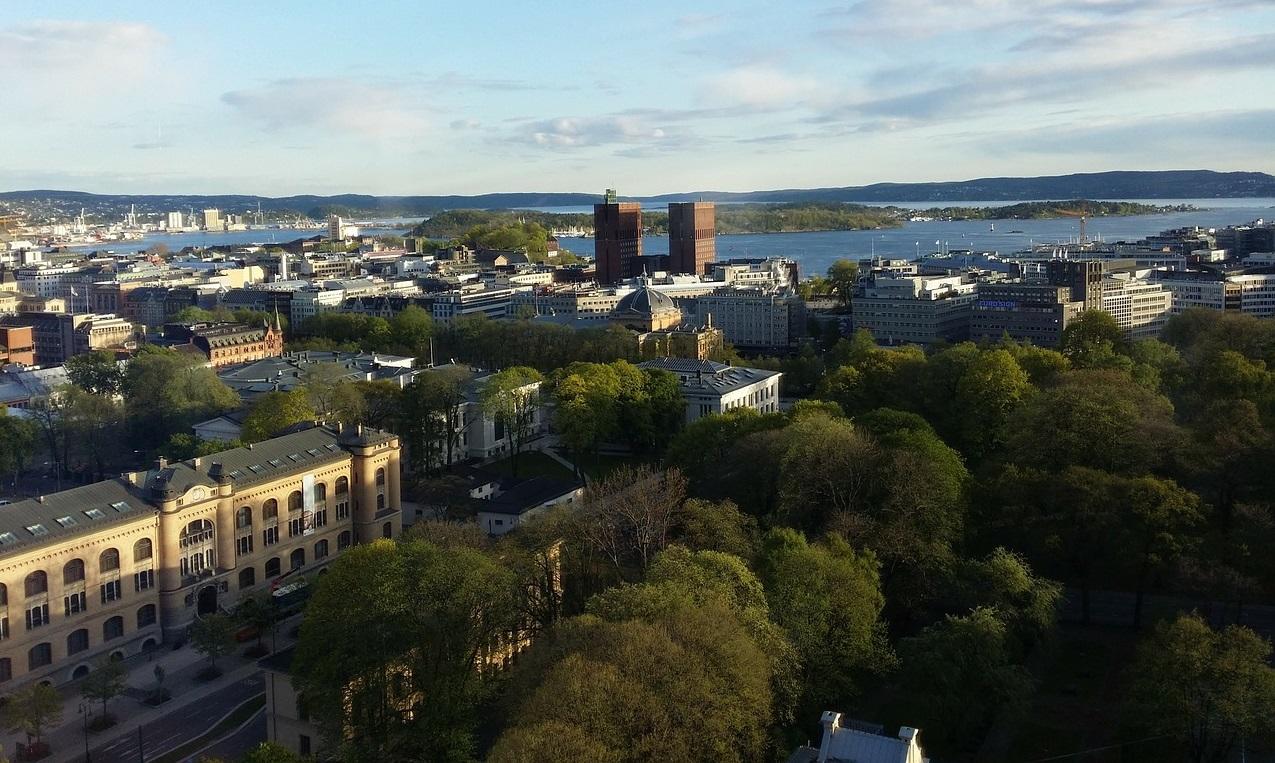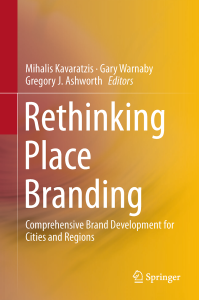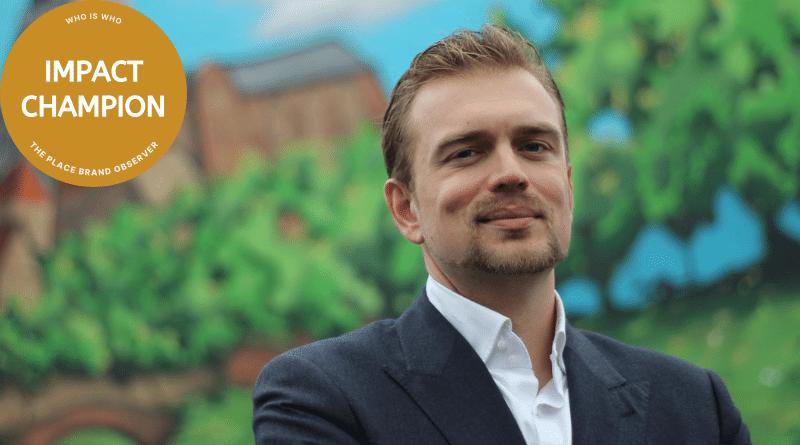Meet Martin Boisen, independent advisor at BOISEN: For the Love of Place, co-founder of Phønix: The International Place Branding Panel and lecturer at the University of Groningen. Over the last ten years, Martin Boisen has been involved in around 70 projects related to place branding, especially in connection with cities. In this interview he shares his experience from working at the coal face of place brand strategy development and brand management.
Learn about:
- The difference between place marketing and place branding;
- His key insights from 10 years as adviser on city branding and urban strategy;
- How to measure the effectiveness of place branding in an urban or regional context;
- Why place branding doesn’t work without place management.
Martin, when did you discover your passion for cities?
I was born and raised in the middle of Copenhagen (Denmark), but my family comes from the rural border-region between Denmark and Germany. Every vacation spend there underlined the many differences between life in the countryside and life in the city.
When I started traveling – mostly to Central and Eastern European cities which were incredible cheap in the years after the fall of the Berlin Wall – I fell in love with cities like Prague and Budapest and from there on it just kind of grew on me. Since then I’ve visited close to 600 cities and towns all over the world, and I remain curious about how they originate, develop and how it is to live in them.
I strongly believe that cities contain both the best and the worst of human society. Therefore, urban planning, urban strategies, urban governance and urban solutions are crucial instruments for a better future.
Through the rapid developments of cities in the last decade world-wide, the very nature of ‘the urban’ changes as well – and we have to focus our efforts to address the issues of cities being both places for people to live and at the same time being nodes in a broadening and deepening network of cities that spans the globe with all the possible benefits and repercussions of such mutual dependency.
Your key insight from almost 10 years as adviser on city branding and urban strategy?
That place marketing targets actual behavior and place branding targets perception, which makes the two incredibly intertwined, but not synonymous. This distinction should be kept clear at all times, from the formulation of tenders to the specification of project KPI’s.
It’s not rocket science, but it is complicated nevertheless. Every place is different and although best practices (and worst practices) are helpful, copy-paste policies very rarely work in different geographical contexts.
Being relatively free of worry, enjoying personal freedom, having individual opportunities, good infrastructure, healthy environments and a good social mobility all adds up to the quality of life of people living in a place. Economic goals are means to reach that end, not the other way round.
To me, this is not an ideological statement, but a vision: that the goal of planning, building and managing places better first and foremost targets the people that live in them.
If you want people to visit your place, make sure people visiting right now are having a good experience. If you want companies to invest, make sure the business climate for the companies in your place is attractive. If you want people to settle, make sure the current people living there are content and happy. Don’t just talk the talk, walk the walk.
You just finished consulting work for Oslo – what was that about?
Oslo is one of the fastest growing capital cities in Europe, it has a very high standard of living, incredibly quality of life and its location is picturesque to say the least. Norway is world-famous for its beautiful landscapes, its stable society and its huge fossil fuel resources, and how they have chosen to manage this wealth.
Oslo, however, is relatively unknown for a capital. A broad coalition of companies and municipalities has decided to work together to improve Oslo’s recognition, it’s reputation and it’s propositions with a place brand management approach.
As always, such projects must be a team effort. I had the pleasure of being the vice-chairman of the Advisory Board, provide pre- and post-tender advice to the commissioners and help refine and finalize the strategy document to lay out the basis for Oslo Region’s place brand management. I did this together with Greg Clark from The Business of Cities, and a great team comprised of representatives from Oslo Business Region and Oslo Regional Alliance. We also closely cooperated with Visit Oslo and a number of affiliated organizations.
At the moment, I assist in establishing a shared marketing intelligence facility and in selecting meaningful KPI’s for the Oslo Brand Alliance.

One of the bold choices was to be fully transparent about the process and the project, and not hide any documents, outcomes or strategies out of fear of the media’s or the public’s reactions. This is one of the reasons that I remain committed to this project and the people I’ve worked with there. I believe that the combination of the resources, the momentum, the coalitions and the team is what it takes to set the bar even higher in the future.
Which part of your work as a director and senior advisor at City Result did you find most challenging?
The nature of our work means that you always have to start from scratch again. Of course you can apply tools and experiences from other places, but every place – and thus project – is different. This is what keeps this work exciting, but it is also a main challenge for many traditional consultancies that have to earn most of their money by repeating the same tricks over and over again.
Bridging this gap was the main challenge at City Result. To keep producing state-of-the-art advice with a sound business model underneath. I’m very skeptical to whether such a balance can be sustained in the long run within a traditional consultancy firm set-up. That is a big part of why I decided to leave and become independent again.
Why did you decide to join the University of Groningen as a lecturer?
I love teaching. In fact, before I became the director of City Result, I was teaching urban and regional geography at the University of Utrecht next to my advisory activities. So when I left City Result and became an independent advisor again, I applied for a part-time lecturing position in Groningen and got it.
Teaching is not only a great reward in itself. Seeing students put their minds to a complicated problem and assist them in solving it keeps me intellectually in shape. I see it as a sort of mind-fitness for both them and me.
Why did you co-found ‘Phønix – The International Place Branding Panel’ in 2014, and what is it about?
As mentioned earlier, I’d lost belief in the traditional consultancy firm set-up. However, I’ve never been surer of the added value of more brains and more eyes on a project. During my projects I’ve seen that commissioners realize the added value of having different experienced people on board who work actively with them and co-produce the advice, instead of delivering a hundred pages report that nobody is going to read and a slick powerpoint presentation. Through Phønix, we aim for the client to do most of the work, and we are there to assist, reflect, provide insights and give second opinions.
‘Phønix: The International Place Branding Panel’ was created as a tangible proposition to cities and regions that don’t want to be completely reliant on one vision and one approach. The panel is flexible and we have no overhead costs or fixed junior consultants on the payroll. This means that we can offer a lot of seniority for a highly competitive rate.
Having been board member of the City Marketing Network in the Netherlands – do you agree that there is a need for place branding principles such as those developed by Robert Govers, Erik van ‘t Klooster and Gerard van Keken?
I applaud all initiatives that aim to provide any kind of order in the theoretical, conceptual and managerial chaos that is place branding. The above mentioned principles are clear to me and I agree with them. Although everybody should be allowed to have their own principles and work with their own definitions, there should at least be some kind of common ground somewhere, and this looks like a good beginning.
Through Phønix – I’ve had the pleasure of working with other place brand experts from around the world to produce what we’ve called the Place Branding Manifesto. We’ve coined it in what I would call ‘poetic’ statements that address some of the do’s and don’ts of place branding. I feel that wherever I – or one of my fellow panel members – present this, it resonates with the people actually working with cities and regions on a daily basis. And this helps clarify what we’re working on and with.
Recently, BEST Place: The European Place Marketing Institute also published a manifesto including some definitions and basic principles on both place marketing and place branding. The publication is available here.
A lot of scientific articles propose specific definitions that many policy makers and consultants would benefit from studying more closely. In the day-to-day business it is quite tempting to fall back to simple promotional activities and short-term exposure – so keep the bigger picture in sight at all times.
How to measure the effectiveness of place branding in an urban or regional context?
This seems to be the question of all questions these days. The cost-benefit culture permeates all aspects of governance and although it is a valid and highly relevant question, a lot of people will not like my answer:
First of all, the ambitions and expectations have to match the budgets. This means that one should agree on the KPI’s before each funding period and set realistic and measurable targets. This goes hand in hand with the realization that some of the assumed benefits of place branding aren’t that tangible and therefore can’t be measured accordingly. In this case, we should be transparent about this fact. In the long run, this will increase the viability of the organization(s) tasked with place branding.
Second, when measurements can be and are made – it is always a problem to underpin the true effect of the place branding projects. In place branding we deal with the overall perception of a place, and there are many factors that influence this perception. In fact, almost all factors influence this one way or another.
A lot of these factors are external, and thus beyond the control and often beyond the influence of the organisations in charge. But this is nothing new. Large brand-driven companies are facing the same challenges when evaluating their branding efforts – and they have much larger budgets and much more refined tools for effect measurements. This doesn’t stop them from continuing does it?
This all doesn’t mean that one should cease to try and justify the investments of time, energy, money and other resources. I just want people to reflect upon the fact that the measurements can’t be more expensive than the actual actions to be undertaken.
Also, circumstantial evidence might be the closest we’ll ever come to ‘prove’ anything, when involved in place branding. This is also true for place marketing, although much more can be measured and made tangible when we’re dealing with actual behaviour of people and organisations.
As an advisor I’ve been involved in the evaluation of a lot of projects and organizations. In this role, I’ve been continuously surprised by the lack of formulated goals and success criteria in place branding. Often, these are kept vague and loosely formulated. While this might be understandable in the beginning, it can become a large problem later on – when evaluations are based on (often failed) expectations, instead of agreed goals and measures.
In my opinion, this forms one of the reasons why a lot of place branding projects and organizations has a very low life expectancy. I think it is too easy to blame politics for this.
 Your favorite place branding book at the moment?
Your favorite place branding book at the moment?
The latest work of Kavaratzis, Warnaby and Ashworth, [easyazon_link identifier=”3319124234″ locale=”US” tag=”tpbous-20″]Rethinking Place Branding[/easyazon_link], is on the top of my list for 2015.
If I have to recommend a book that I’ve read in 2014 it has to be Umberto Eco’s [easyazon_link identifier=”0847841219″ locale=”US” tag=”tpbous-20″]The Book of Legendary Lands[/easyazon_link]. Supported by beautiful illustrations, it isn’t entirely off-topic when one is working with place branding. Eco explores the interaction between the human imagination and places, both real and imaginary. A great read.
Anything else you’d like to mention?
Since I believe that it’s pointless to talk about place branding without talking about place management – I would like to take the opportunity to express my gratitude to the Institute of Place Management. IPM has been one of the leading institutions in organizing and creating a bi-annual international conference related to place branding – and very instrumental in my career.
In my opinion IPM has played a key part in putting place branding on both the academic and the professional agenda and I would like to give them credit for that.
Thank you Martin.
Connect with Martin Boisen on LinkedIn or learn more about his research and advisory work here.
Enjoyed our interview with Martin Boisen, city branding scholar and advisor? Spread the word!


